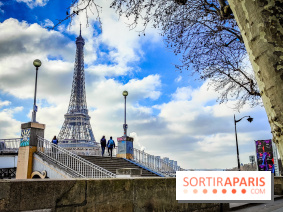What are the highest risk places for Covid-19? A question preoccupying many scientists. The latest and 3rd ComCor study for Institut Pasteur confirms conclusions of the first two. This is what suggested this February 7, 2021, epidemiologist and Institut Pasteur Professor Arnaud Fontanet in Journal du Dimanche. According to this study "the spread mostly occurs within the family or between friends"
And what about the office? "Remote working protects but contamination are less common at the office than in October" Pr. Fontanet adds in an interview with JDD. Why? Surely because barrier gestures are better completed and facemasks are worn.
As for stores, places of worship, and public transit, these places do not increase "the infection risk either" unlike carpooling, "undoubtedly, because there is less space and facemask-wearing is not automatic".
This new study then confirms the first two, already conducted for Institut Pasteur and that considered that family meals or meals with friends were a high risk place for coronavirus infection.
According to a new German study released this past February 10, Covid-19 infection risks are smaller in places of worship than in schools.
Carried out by Pr. Martin Kriegel from the Hermann-Rietschel Institute (TU Berlin) and engineer Anne Hartmann, this study focuses on Covid-19 airborne infection risks in closed and public places.
According to this German study, the R (contamination risk through someone sick) is of 0.5 in cultural places with a visitor-capacity limited to 30 to 40%. Why this factual situation? Simply because visitors are often silent in these places (museums, theaters), and therefore spread less aerosol in the air. The study in question also confirms the importance of the mask and social distancing. But careful though, this study has not been carried out including variants.
This may be hope for museums and monuments that - according to French Minister of Culture Roselyne Bachelot - could be the first ones to reopen, as soon as possible. As for festivals, they are limited to 5,000 people seated on the open air only.
On the other hand, Pr. Kriegel says: "Situations where many people come together in a small space: You can’t ventilate sufficiently, it will always be an unfavorable situation". Therefore, contamination risk in schools is said to be 6 times higher.
This new study enables to get a bigger picture about the safest places. Sitting at the top, theaters, operas, museums, hair salons, and public transit, where with facemasks on, the R is respectively from 0.6 to 0.8. As for restaurants, with 25% patrons, the R is around 1.1 (namely, one positive case contaminates 1.1 person). To conclude, in high schools, without masks on, and without limits, it skyrockets to 11.5.
Before that, an American study was carried out. Released on November 10, 2020 in Nature magazine it revealed that restaurants, gyms, bars, cafés and hotels are the highest risk places for infections. for instance, the city of Chicago – for which the study established that 85% of the contaminations happened in these kinds of places (only 10% of places visited by city dwellers).
Yet, the lowest risk places are computer stores, car dealerships, and even more surprising, pharmacies yet visited by many sick people potentially infected with Covid-19. How can this high risk of contamination be explained? The study confirms a hypothesis suggested by many scientists, naming – as explained by Express – “the longer one stays in a crowded place, the higher the risk”. The density of populations in a place has a very important role to play, this explains why restaurants, bars, cafés and other aforementioned places are logically places the virus spread the most in.
“This study is particularly precise and matches with the many observational studies” INSERM research director Vittoria Colizza tells Figaro. She goes on: “Environments where it is impossible to keep distancing are those with the highest risks. It seems obvious, but studies like this one enable to quantify risks and shall guide our decisions to lift lockdown”.















